The enhancement of the Crypt of Sant’Agnese in Agone, with the new artistic and architectural lighting system donated by the Webuild Group, is an opportunity to go to the rediscovery of the entire complex of the sumptuous Roman church, a sumptuous protagonist of the Piazza Navona setting. Tomorrow evening in the square, from 7:30 p.m., there will be a concert in the church that will resonate throughout the square, accompanied by a light show, to celebrate the completion of the crypt’s enhancement and its upcoming opening to the public.
An old legend, now rooted in the collective imagination, has long conditioned the first impact with the exuberant architecture of Sant’Agnese in Agone, a very ancient Roman church built on the site where the young Agnes suffered martyrdom. It all stems from the presence of a bulky opposite, Gianlorenzo Bernini’s Fountain of the Four Rivers, the absolute protagonist of the urban scene in Piazza Navona, and from the fascination of the rivalry, real or presumed, between two giants of Baroque Rome, Bernini and Borromini. As early as the late eighteenth century, in the Italian translation of Louis Mayeul Chaudon’s Nuovo Dizionario Istorico (printed in Naples in 1791), a note of unprecedented color was included in the description of the square: “The Fontana di mezzo of Piazza Navona with four gigantic statues representing four rivers, one of which stands in an attitude, forming a kind of criticism of the fabrica of the church of S. Agnese placed opposite, the work of Borromini his great emulous [Bernini’s], but not equal.”
Whether we were told it as children, read it in the Touring Club’s Red Guide, faithful companion of so many trips, or heard it from some skillful cicerone, the old story of the Nile covering its face so as not to see its facade, or the Rio de la Plata fearing its collapse, have conditioned the common perception of the majestic building. It is enough to check the dates to dismantle the narrative (the fountain was already completed when the very first plans for St. Agnes were submitted), and no one doubts any longer the qualities, aesthetic and constructive, of the church, now recognized as one of the greatest architectural expressions of its era, but it is also true that, that sense of vertigo attributed in spite of itself to the Rio de La Plata (sculpted by Francesco Baratta in 1651), can be perceived (in an entirely positive sense), even by the modern visitor who approaches Sant’Agnese for the first time, or again.




The concavity of the façade attracts with magnetic force, and the double columns on either side of the entrance, which seem to extend into the pillars of the drum, accompany in an upward motion that, through the ribs of the canopy, culminates gloriously in the verticalism of the lantern. The very elegant dome looms over the piazza, so much so that it seems part of the facade itself, but the tall towers that frame it conclude the whole in a harmonious sense, with perfect balance of proportion. To achieve this effect Borromini invaded the space of the adjacent buildings: the large window under the left bell tower, for example, which appears perfectly integrated into the facade, does not correspond to the church but to a room in the sumptuous Pamphili Palace. The most attentive will not have missed the detail from a scene in the film La Grande Bellezza, when Toni Servillo, as the seductive Jep Gambardella, utters a well-known line looking out of that very scenic opening. And it is to a member of the Pamphili family, Giovanni Battista, better known as Pope Innocent X, that we owe the building of the present church, erected on an earlier building that was the object of ancient worship; the result, combined with the rebuilding of the adjoining palace and the fountain of the rivers, over which the arms of the Pamphili house soar, would mark forever the renovation in monumental key of the square, built on the elliptical layout of the ancient stadium of Domitian.
The construction story was not the easiest: the initial design was due to the papal architect Girolamo Rainaldi, who tackled the undertaking together with his son Carlo. The first stone was laid in 1652 but, in the face of criticism received, the two were soon replaced (1653) by the more imaginative Francesco Borromini; the latter worked on the project for four years, before being in turn dismissed in favor of Carlo Rainaldi, who brought the work to completion (1572) flanked by Giovanni Maria Baratta and Antonio del Grande.
Baratta’s involvement must have been particularly incisive, not only because of the design of the towers, which is attributed to him, but because he had begun to have his brother Isidoro, in his native Carrara, work on the decorations and carving ornaments in marble, laying the foundations for the eighteenth-century fortunes of the family workshop. Giovanni Maria also succeeded in involving his younger brother Andrea in the building site, procuring for him the commission for a Saint Eugenia intended for the building’s attic, the first (and unfortunately the only one completed) in a series of similar sculptures to be placed to crown the facade.

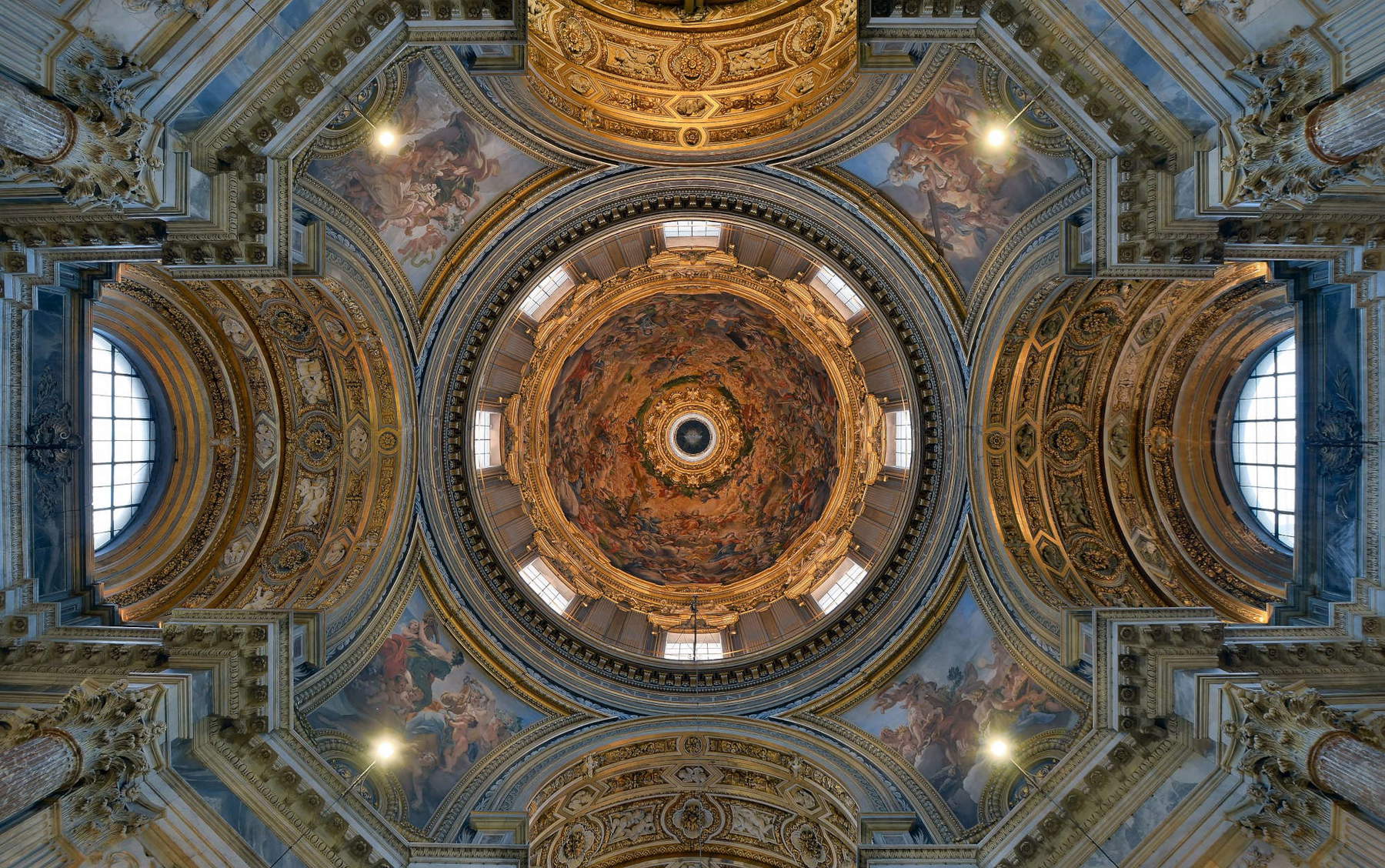
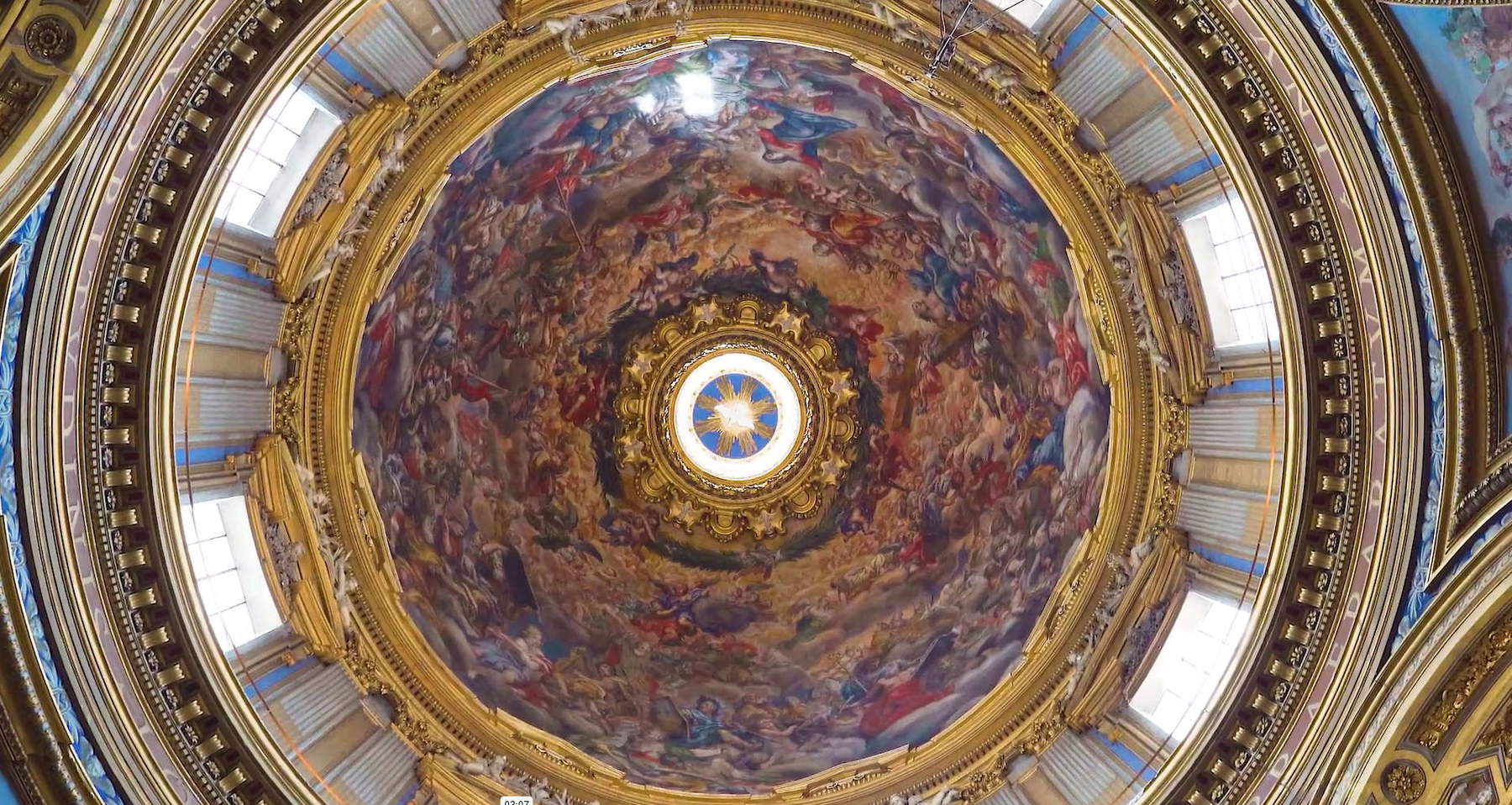
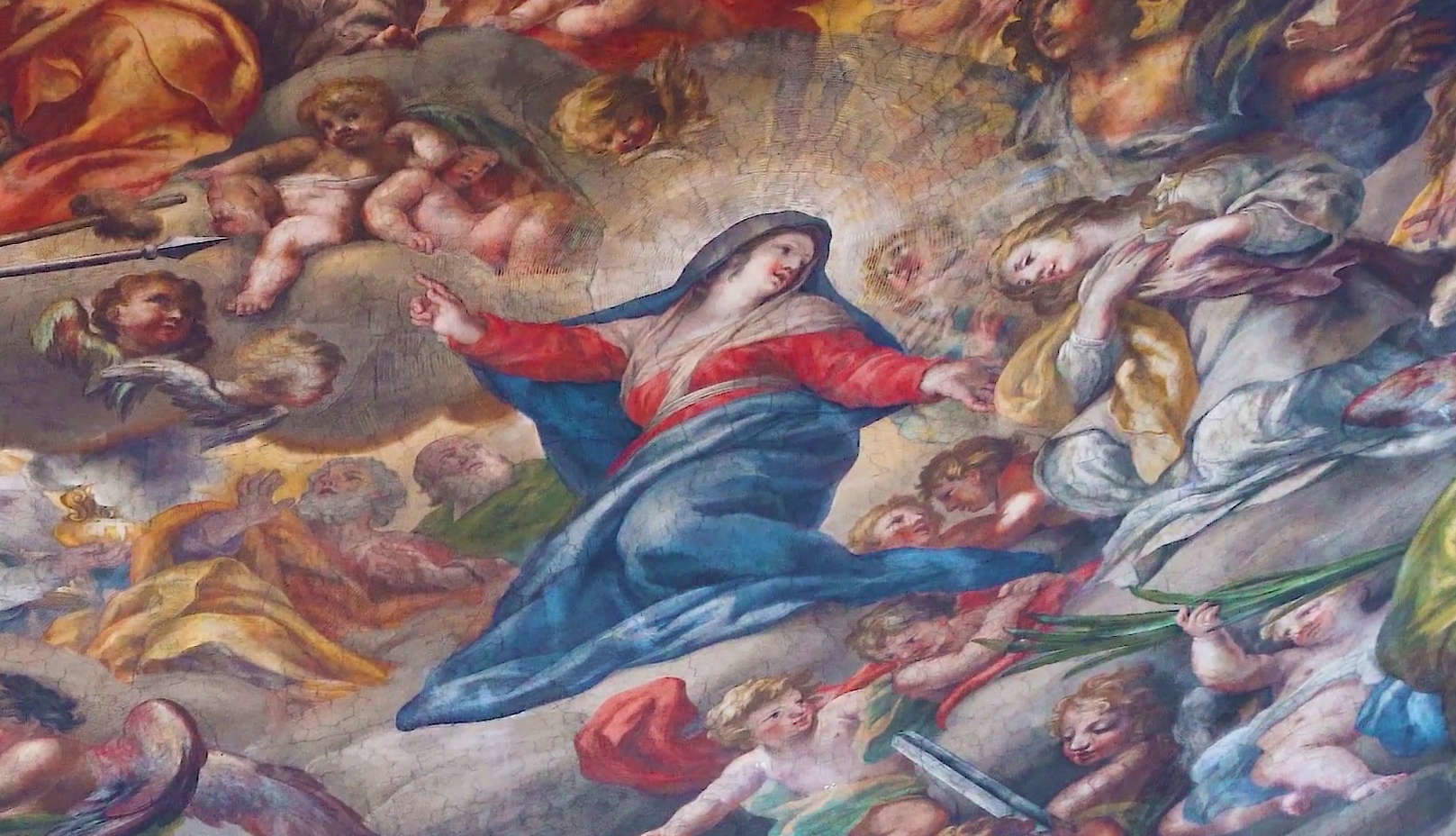
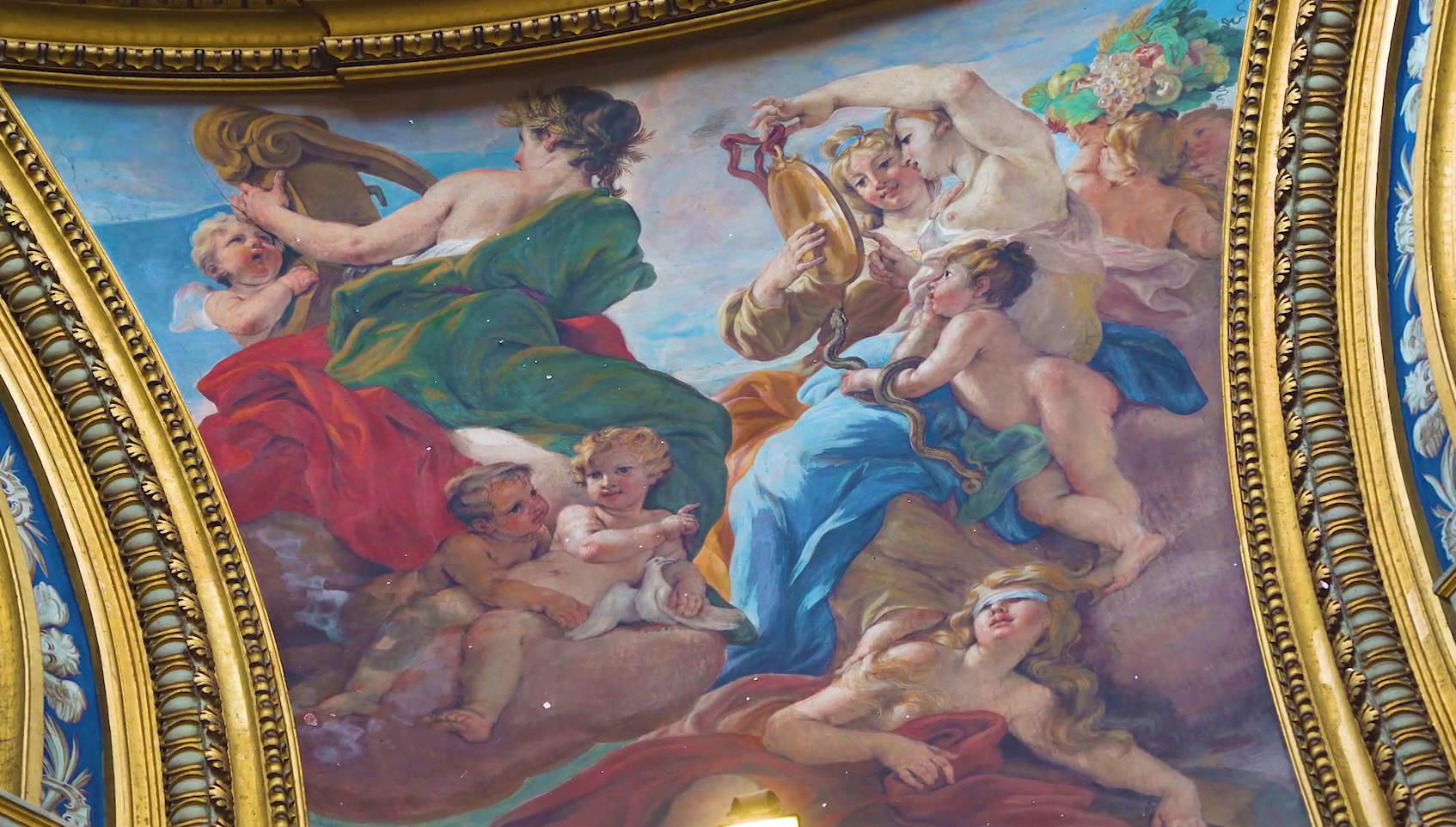
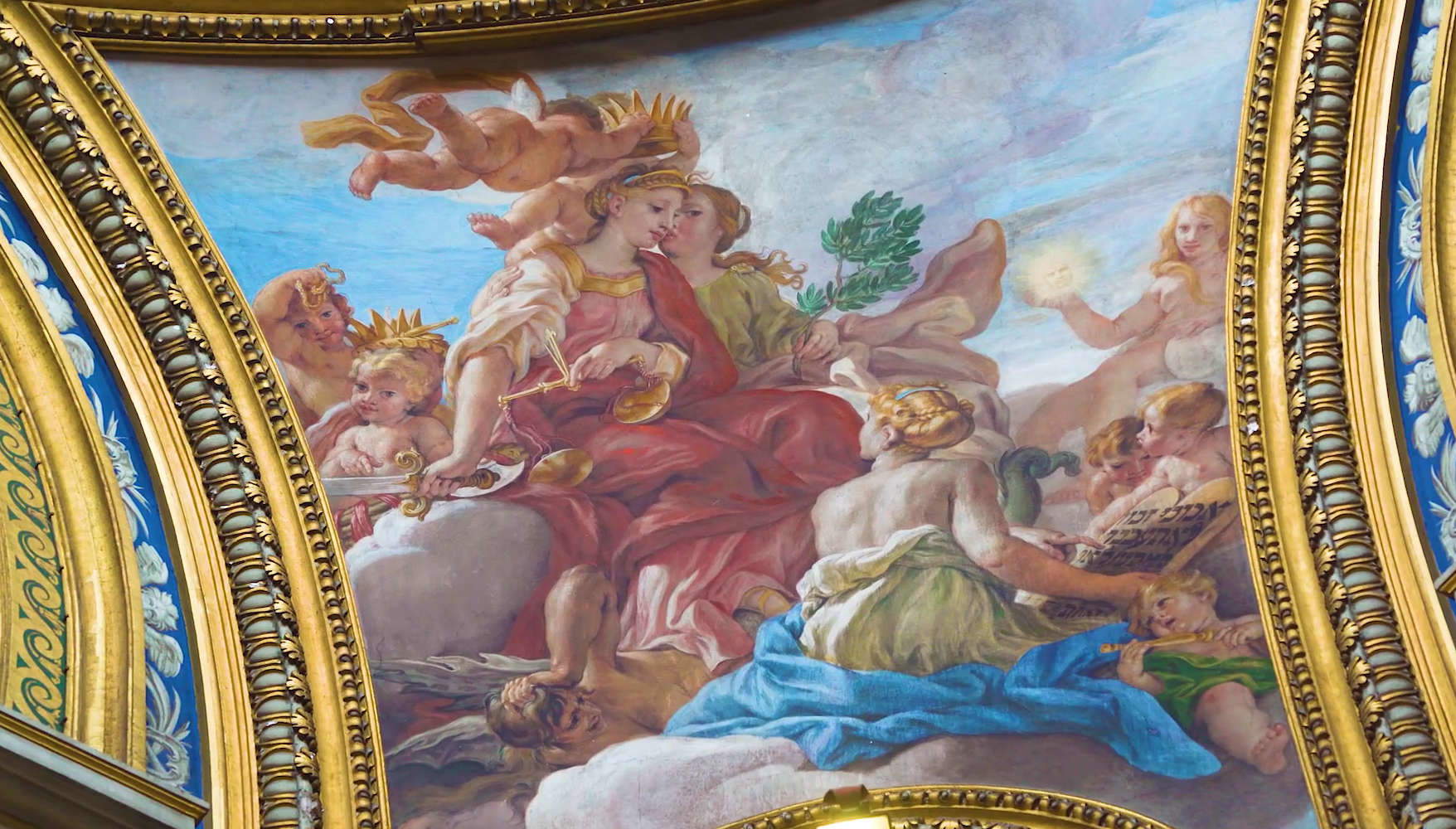

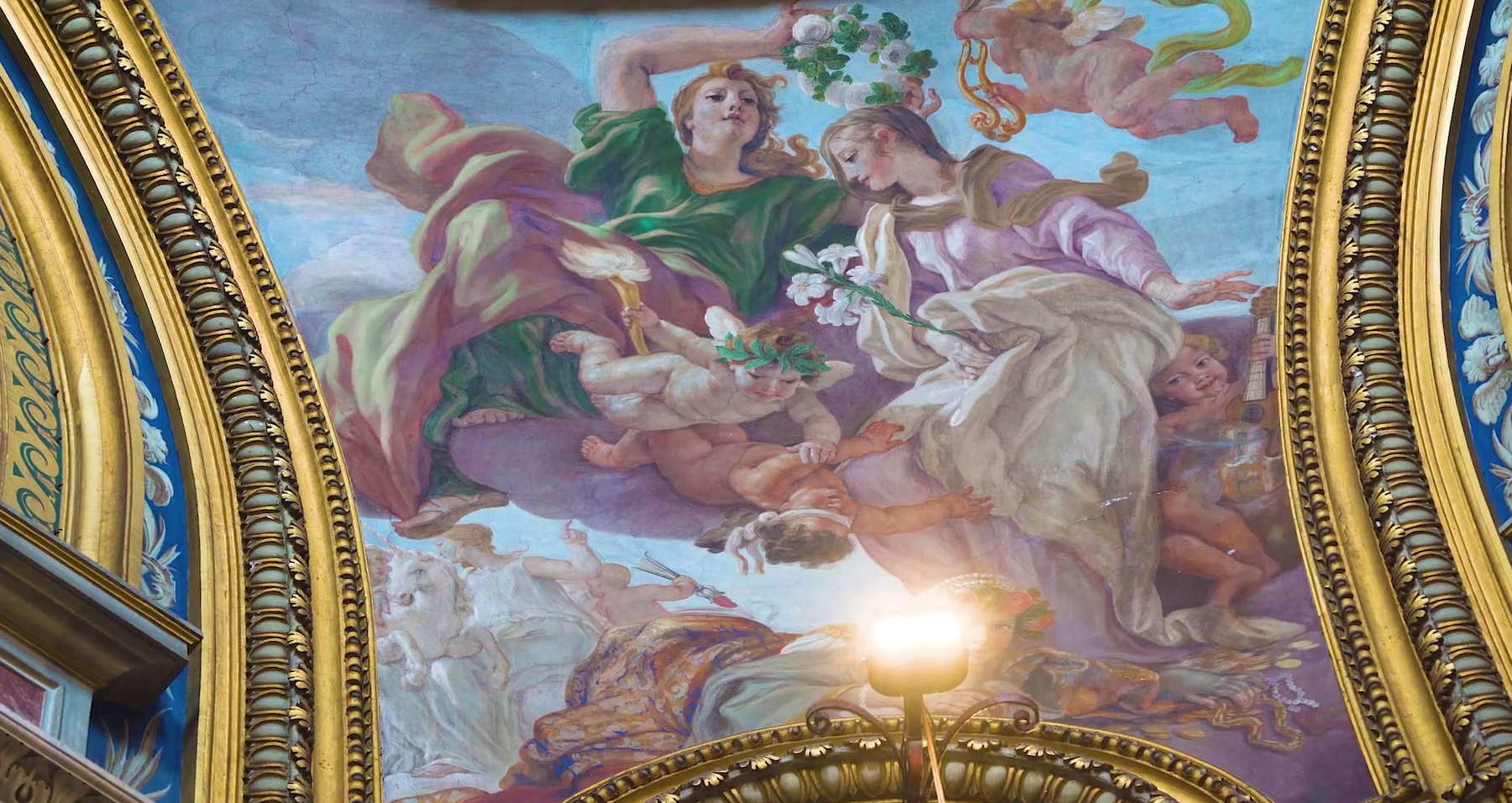
The interior confirms that sense of vertical movement clearly perceived from the outside: the projecting cornice, above the columns, marks the demarcation between the lower register, with its strongly sculptural character, and the upper register, dominated by pictorial decoration. The body of the church is played on the contrast between the whiteness of the marbles, the red of the Persian stone, and the precious antique green columns of the high altar, vestiges of the Arch of Marcus Aurelius, from Colonna Square.
As you gaze upward, you are enraptured by the triumph of gilded stucco and the colors of the cardinal virtues (1666-1672) frescoed by Baciccio on the pendentives, until the light invading the church from the windows of thehigh tambour, does not invite one to reach the great dome fresco (begun in 1670 by Ciro Ferri, a favorite pupil of Pietro da Cortona, and clearly inspired by the Cortonesque one in Santa Maria in Vallicella) where, as if at the apex of a crescendo, Saint Agnes is finally introduced to the glories of Paradise.
Nonetheless, in the economy of the church, it is the sculpture that plays the absolute starring role, and few places can offer such a representative panorama of late Baroque statuary. Here again the story is eventful, with works often executed by more than one artist: Alessandro Algardi (Bologna, 1595 - Rome, 1654) was succeeded by Domenico Guidi, Melchiorre Caffà (Vittoriosa, 1636 - Rome, 1667) by Ercole Ferrata, and Ferrata himself by Leonardo Retti and Giovanni Francesco Rossi. Framed as paintings, and placed on the altars, five large reliefs, with their plastic masses, thus dominate the octagonal space of the church; the Martyrdom of St. Eustace (Caffà-Ferrata-Rossi) the Death of St. Alexis (Rossi), the Martyrdom of St.Emerenziana (Ferrata-Retti), the Death of St. Cecilia (Antonio Raggi), and the Return of the Holy Family from Egypt (Guidi), create an enormously fascinating ensemble in which the differences in language among the various authors are mitigated by the common Algardian inspiration. The sculpted figures invade our space, transcending the limits imposed by the frames to involve us in the sacred drama. The relief, with its depth, overcomes the illusion of painting and satisfies that aspiration, so theatrical and baroque, which aimed to break down the boundaries between staging and real life, between theart and the viewer, testifying to the spread of a typology reimagined and reinvented by Algardi with the Meeting of Leo I and Attila (completed in 1753) in St. Peter’s, and which would soon spread like wildfire.

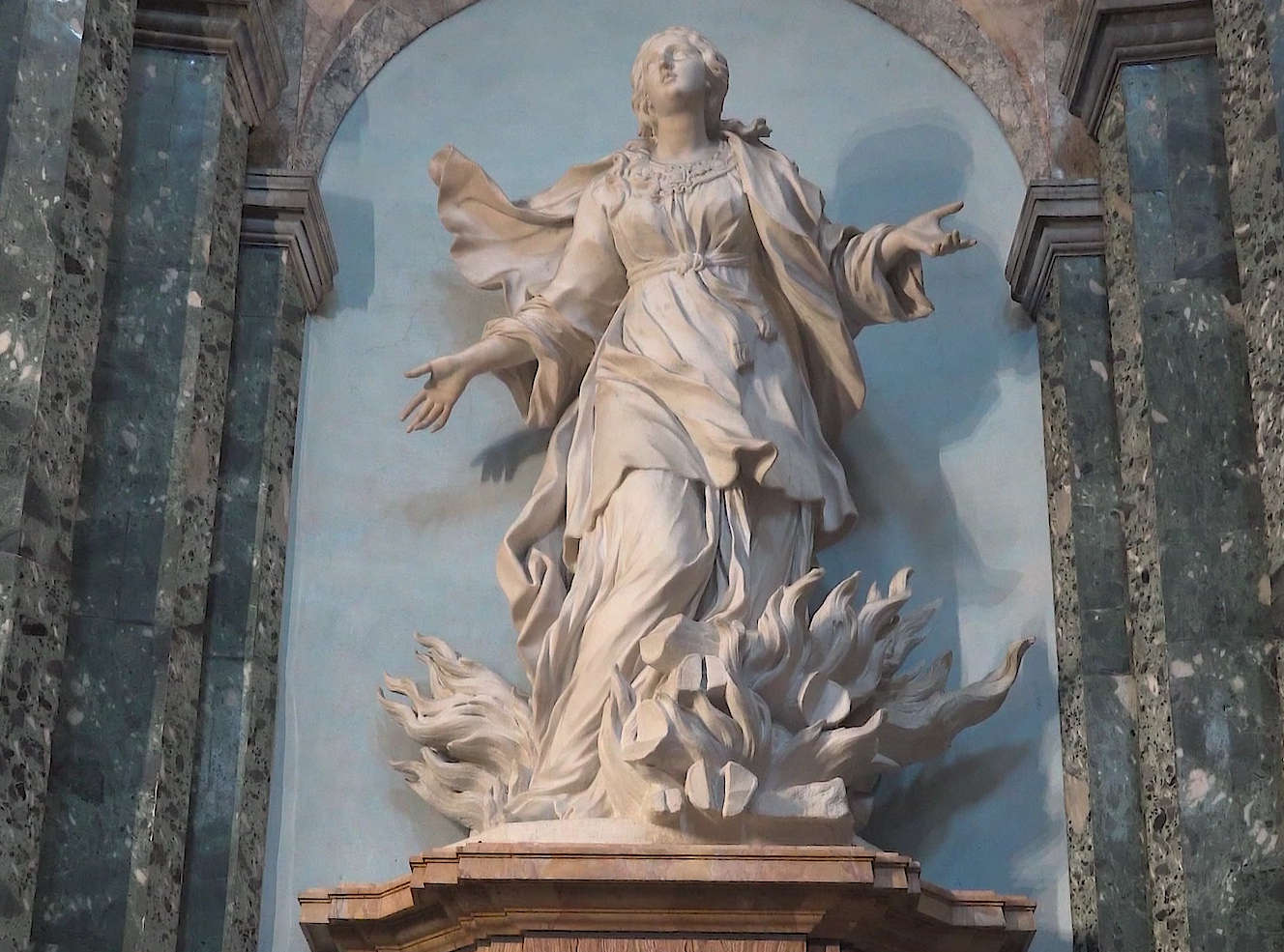
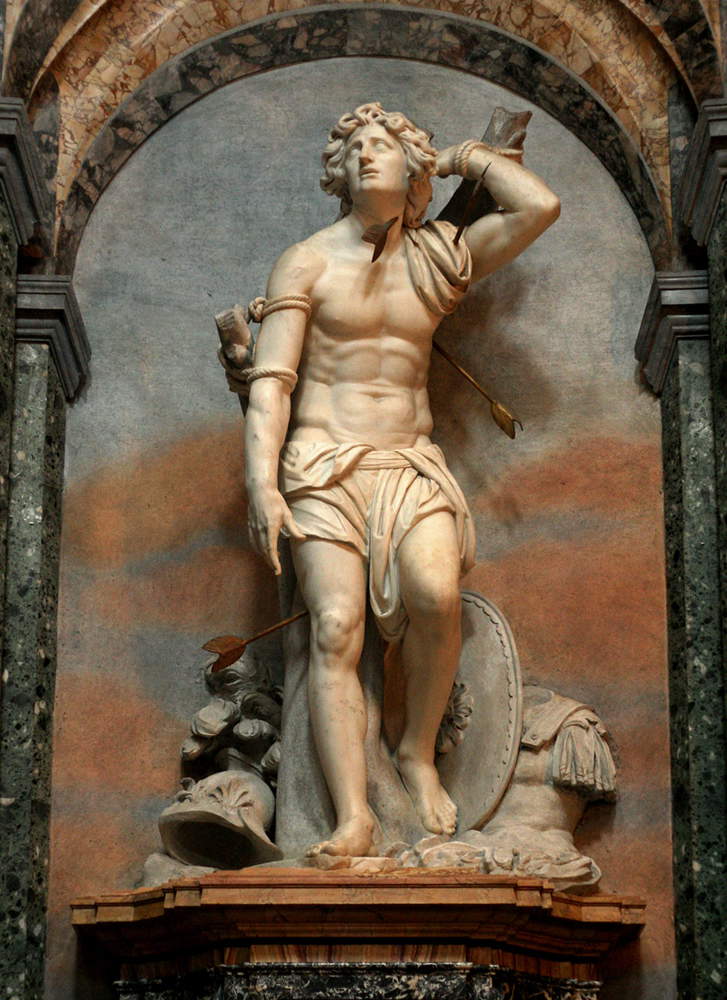
A happy invention of Francesco Borromini, who modified the Greek-cross plan designed by Rainaldi by extending its arms, allows two side chapels to complete the overall view enjoyed from the central block of the church. In this case, however, the sequence of marble altarpieces is interrupted and we are faced with two scenic sculptures in the round: the St. Agnes (1660) is a masterpiece by Ercole Ferrata, where the dramatic choice of scenic action (the moment when the saint survives the stake thanks to divine intervention) is functional to the astonishing material rendering of the draperies and tongues of fire, with suggestions derived from Bernini and Duquesnoy. The later St. Sebastian (1717-1719) by Paolo Campi, a pupil of Le Gros, is less immediate in its graceful arching, but it shows how deep-rooted was the penetration of Apuan artists (and patrons) into the Sant’Agnese worksite. In fact, to the aforementioned Baratta brothers, Guidi and Campi himself, must be added the figure of Cardinal Alderano Cybo, who resided in the Pamphili Palace and was personally involved in entrusting the relief for the high altar to his fellow countryman Guidi.
One of the most visited places in the complex is, undoubtedly, the chapel of St. Philip Neri, a devotional destination capable of attracting a continuous stream of pilgrims: less interesting from a historical-artistic point of view, the chapel is known to house, since the early 20th century, the relic of the skull of St. Agnes, coming from the basilica of St. Agnes Outside the Walls, and preserved since the 9th century in the Sancta Sanctorum in Lateran, inside a precious silver reliquary now in the Vatican Museums.
The visit, at this point, might seem accomplished, but history, in Rome, always unfolds on several levels, and it is enough sometimes to open a door, or descend a staircase, to enter a new and unexpected dimension. From the corridor that leads to the chapel of San Filippo Neri one can access a cemetery crypt where members of the Pamphili (and Doria-Pamphili) family, including Pope Innocent X, rest, but the real treasure is reached from the chapel of Sant’Agnese where, next to the statue of Hercules Ferrata, a steep staircase leads to the crypt below, with a descent of just a few meters that allows one to traverse twenty centuries of history.
Also known as Sacellum Infimum, this fascinating place consists of three rooms, carved out of the halls and fornixes of Domitian’s stadium, the large structure, inaugurated in 86 A.D. that still marks the perimeter of Piazza Navona. Sometimes called, improperly, Circus Agonalis, the facility was not intended for chariot and horse races but for athletic and artistic competitions, and it seems to have been capable of seating eighty thousand spectators.
The cave is an object of ancient worship, and has been restored several times. Dating from the 17th-century phase are the fresco with the angel rescuing Agnes and the valuable marble altar embellished with a relief showing the saint being led to martyrdom: the figure of the young woman is petite, overwhelmed by the imposing physicality of the Roman soldiers, with their precious trappings; her fragile nudity is barely covered by her hair, which, tradition tells us, was miraculously lengthened at the tragic juncture. An early 19th-century engraving, based on a drawing by the Roman painter Andrea Pozzi, says it is the work of Alessandro Algardi, but, a 17th-century document attributes it to the otherwise unknown Giovanni Buratti, dating it to 1661: so there are many questions, both about the possible Algardian authorship of the invention and the identity of the unknown Buratti.
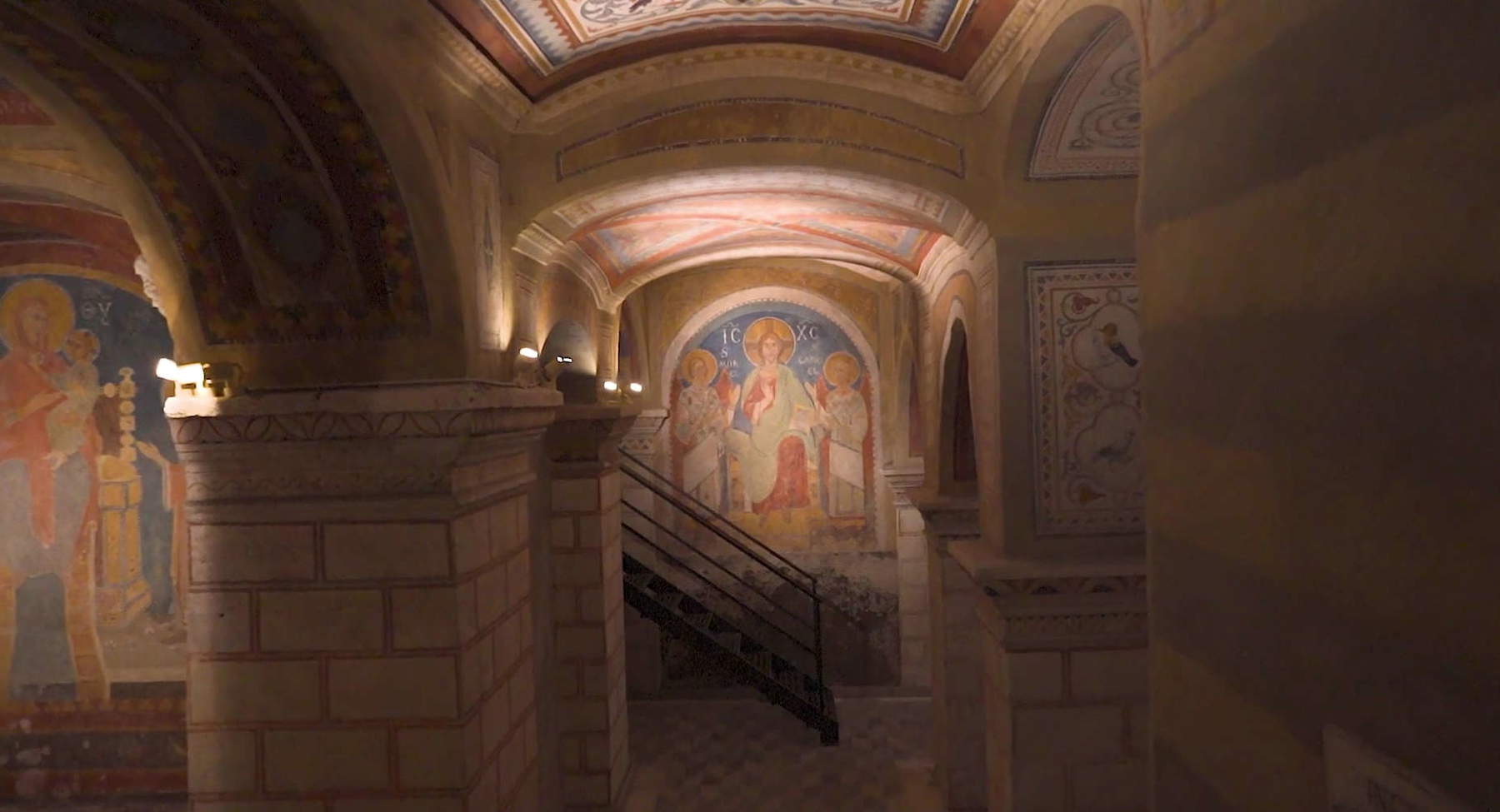
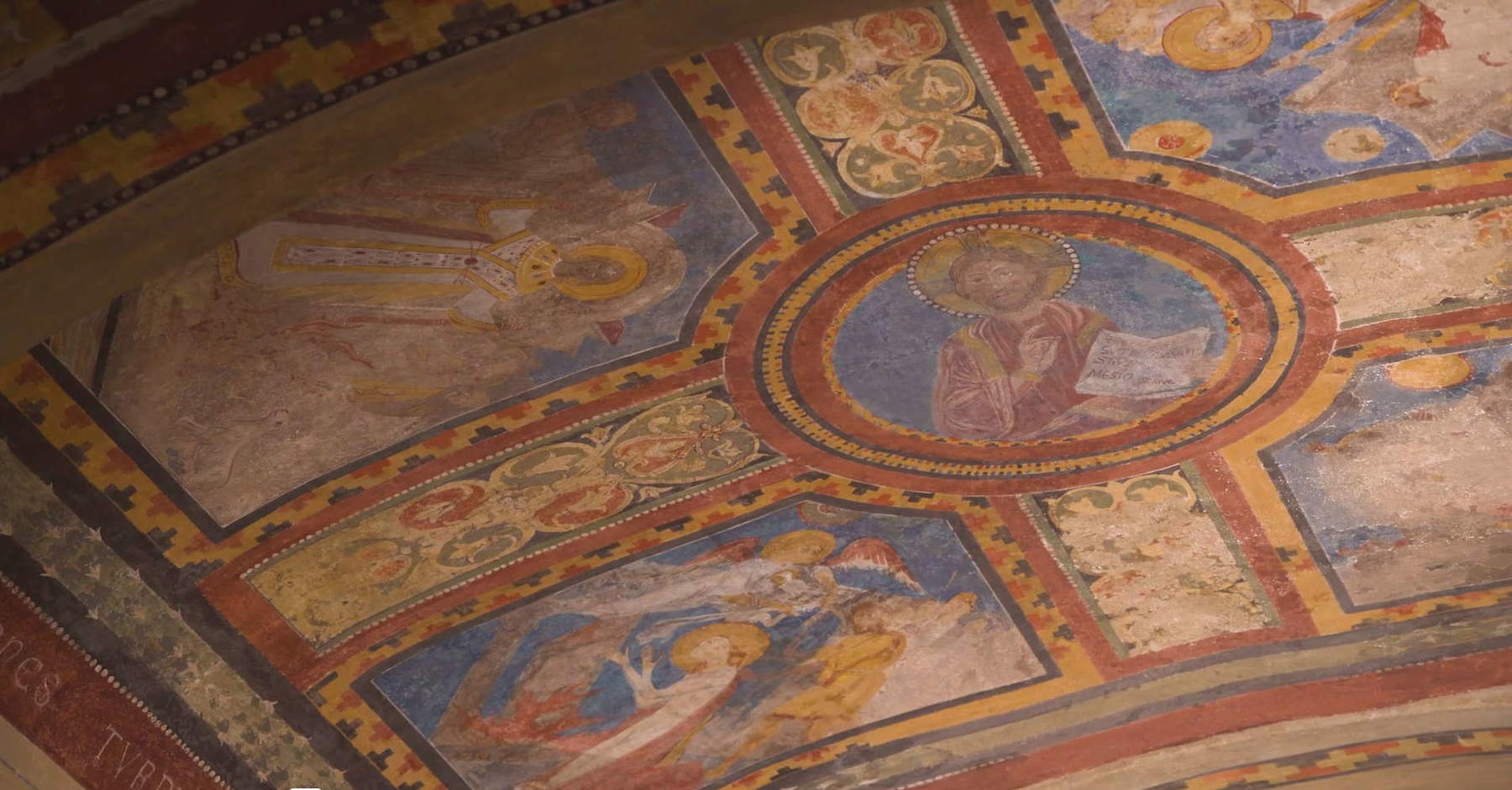

The rooms are decorated with neo-medieval frescoes, executed in 1882 by a young Eugenio Cisterna, later established as the author of large decorative cycles of sacred painting, and founder of a famous manufacture of stained glass still in activity. The late nineteenth-century intervention, supervised by Giovanni Battista de Rossi (a figure of great importance for studies of Christian epigraphy and archaeology), remained the last for more than a century: since then the crypt has been subject to Tiber flooding, rain infiltration and rising water, remaining inaccessible for a long time.
A very recent restoration, completed in 2023, has sanitized and consolidated the rooms, which have been made accessible and usable again, thanks in part to a modern lighting system donated by the Webuild Group. The initiative, part of the group’s Culture Agenda, was designed to ensure the preservation of the corpus of frescoes while offering an intimate and evocative atmosphere, where even the technological elements were entrusted to the restorers to achieve a high level of camouflage. it is thus possible to immerse oneself again in this place charged with art and history, being guided by the Latin inscriptions that recall the story of Agnes, and to reach the place of her martyrdom, where an altar was erected since the first Christian centuries.
The most touching moment of the entire experience is reached upon entering the narrow room, decorated with remnants of ancient frescoes, where tradition says the martyr saint was held: it is here that the sacred drama becomes more human and takes on universal traits. The image of a very young Agnes, little more than a child, forced into prostitution in a squalid little room in Domitian’s stadium, for refusing an arranged marriage, is of extraordinary strength, and of great relevance is the cry of pain against all oppression and violence that seems to spring from these very ancient walls.
Warning: the translation into English of the original Italian article was created using automatic tools. We undertake to review all articles, but we do not guarantee the total absence of inaccuracies in the translation due to the program. You can find the original by clicking on the ITA button. If you find any mistake,please contact us.